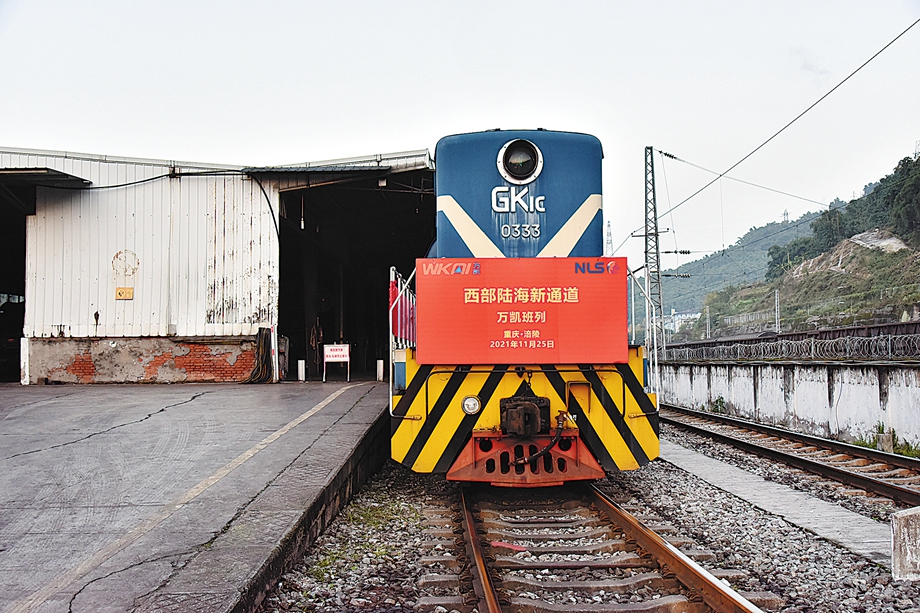Sea-rail route helps speed up overseas shipments from western China

A freight train runs on the New International Land-Sea Trade Corridor. [Photo/CHINA DAILY]
A smooth trade and logistics route-the New International Land-Sea Trade Corridor-linking western China and the world shows how the nation can achieve a higher level of inland opening-up and help its western region further integrate into the global economy, said Li Wei, the director of the marketing department of New Land-Sea Corridor Operation Chongqing. "So far, the corridor has extended to 311 ports in 106 countries and regions," Li said.
A block train loaded with polyethylene terephthalate materials departed on Nov 25 from Chongqing's Fuling district and is expected to arrive at the Surabaya Port in Indonesia this week. The shipment is being made using a sea-rail multimodal transportation route via Qinzhou Port in South China's Guangxi Zhuang autonomous region.
"The great channel southward can largely improve our export effectiveness," said Yang Zheng, general manager of the Foreign Trade Center of Zhejiang Zhink Group, adding that the new trade corridor could help his company gain a foothold in Southeast Asia. The freight train was consigned by the group.
It will take the company's first freight train about 18 days to reach Indonesia, but the normal logistics time could eventually be shortened to 15 days, according to a staff member of the corridor operation in Chongqing.
Yang said that in the past, it took 35 days for the company's cargo at its Chongqing branch to reach Indonesia via river-sea shipment, more than 20 days of which were spent on the Yangtze River traveling to Shanghai. Four years ago, most of the goods in western China being exported to ASEAN countries were transported in the same manner.
Regional imports also proved challenging. From time to time, imported agricultural and sideline products from Southeast Asia went bad due to long transportation time. Now, the sea-rail multimodal transportation route has accelerated shipments.
With joint efforts by provincial-level regions in western China, Singapore and other Southeast Asian economies, the corridor was launched in September 2017 as part of the China-Singapore (Chongqing) Demonstration Initiative on Strategic Connectivity.
With Chongqing as its operations center, the corridor uses railway, seas and highways to link ASEAN countries by coastal or border ports in Guangxi and Yunnan province to the south. The logistics time is significantly shorter than the traditional east-to-sea-channel. "Shipping costs are roughly the same, but a great deal of time is saved," Yang said.
The cargo-20 containers of PET worth 2.67 million yuan ($420,000)-were consigned by the Chongqing branch of Zhejiang Wkai New Materials, affiliated with Zhejiang Zhink Group in Hangzhou, Zhejiang. The company specializes in the research, development and production of PET, and the materials exported to Indonesia will help the tropical country make more mineral water bottles.
According to Zhejiang Wkai, the estimated freight volume of exports via the new route next year will be about 200,000 metric tons, or 10,000 containers. The Chongqing branch of Zhejiang Wkai is planning to overtake the foreign trade and export businesses of its headquarters in Haining, Zhejiang.